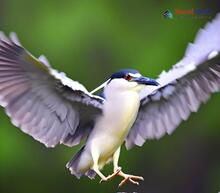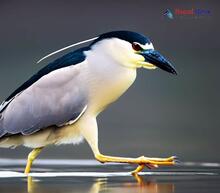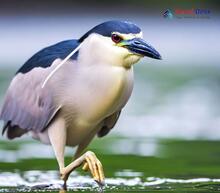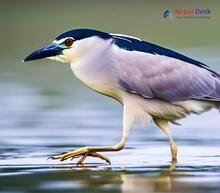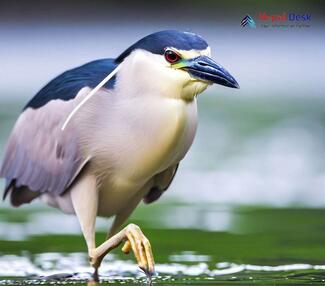Nepal, a country known for its breathtaking landscapes and rich biodiversity, is home to a diverse array of bird species. Among them is the fascinating subfamily Nycticoracinae, which comprises nocturnal herons, also known as night herons. Here, we will delve into the intriguing world of these birds, their unique characteristics, habitats, and their presence in Nepal.
An Introduction to Nycticoracinae
Nycticoracinae belongs to the larger family Ardeidae (herons, egrets, and bitterns). As the name suggests, these birds are primarily active during the night or at twilight. Their nocturnal behavior sets them apart from other heron species. Night herons possess excellent night vision which enables them to hunt for food efficiently in low light conditions.
Physical Characteristics and Behavior
Night herons are medium-sized birds with relatively short legs compared to their cousin wading birds. Their plumage often consists of subdued colors like grey or brown with subtle patterns that help them blend into their surroundings. A distinct feature among most Nycticoracinae species is their red eyes which assist in night-time hunting.
These elusive birds are known to be patient hunters who forage near water bodies like lakes, rivers, and marshlands. They feed on fish, crustaceans, insects, amphibians, and even small mammals. During breeding seasons, night herons become more social and may gather in sizable colonies.
The Presence of Nycticoracinae in Nepal
Nepal boasts an impressive 900+ species of birds due to its diverse ecosystems ranging from tropical lowlands to alpine regions. One can find two types of night herons belonging to the Nycticoracinae subfamily in Nepal: The Black-crowned Night Heron (Nycticorax nycticorax) and the Indian Pond Heron (Ardeola grayii).
Black-crowned Night Heron
Widespread in many parts of Nepal, the Black-crowned Night Heron is fond of wetlands, lakes, and marshy areas. This bird can be recognized by its stocky build, black cap and back, grey wings, and white underparts. With an adaptable nature, these herons are known to reside in both rural and urban settings.
Indian Pond Heron
This species is commonly found near the water bodies of Nepal's Terai region. During non-breeding months, the Indian Pond Heron sports a light, streaky brown plumage which aids them in skillful camouflage. During the breeding season, they transform with a striking blue-black patch on the wings and deep orange-reddish legs.
Conservation Efforts
Habitat destruction, pollution of water bodies, and hunting have threatened various species within the Nycticoracinae subfamily worldwide. As a result, it is crucial to support conservation efforts for the preservation of these unique birds. In Nepal, organizations such as Bird Conservation Nepal actively work towards ensuring sustainable habitats for avifauna and spreading awareness about their ecological importance.
If you ever find yourself birdwatching in Nepal or exploring the diverse habitats this beautiful country has to offer, keep an eye out for these remarkable nocturnal herons. The enigmatic world of Nycticoracinae offers an enthralling glimpse into avian biodiversity that you won't want to miss!

